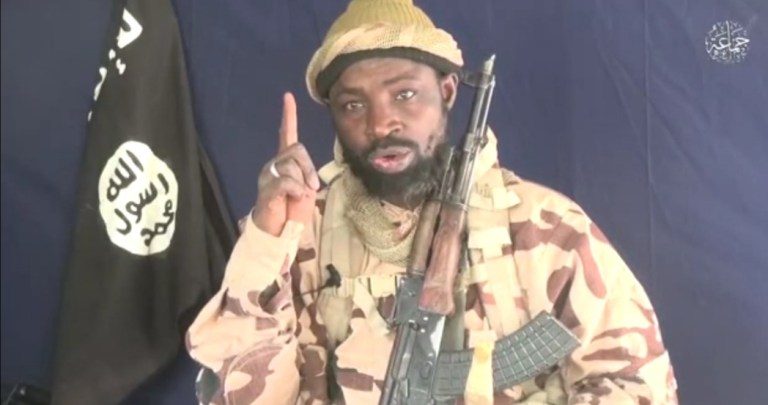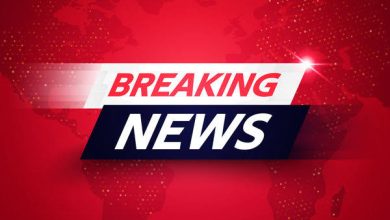Boko Haram: How Over 300 ISWAP Fighters Launched Attack To ‘Conquer’ Shekau

NEWS DIRECT had reported that the leader of the Boko Haram terrorist group, Abubakar Shekau was reportedly killed according to multiple sources.
Information gathered has it that Shekau died on the evening of Wednesday, 19th May 2021.
He was said to have died following the invasion of his Sambisa forest stronghold by fighters of the Islamic State West Africa Province (ISWAP) loyal to the Islamic State (ISIS).
ISWAP was a part of the Boko Haram group before it broke away in 2016 over ideological differences and pledged allegiance to ISIS – an international terrorist organization.
It was gathered that the ISWAP fighters stormed Shekau’s stronghold on Wednesday with multiple gun trucks and overpowered the Boko Haram fighters including Shekau’s bodyguards leading to the death of fighters on both sides.
After overpowering the Boko Haram fighters, Shekau was said to have surrendered and engaged in a long meeting with the ISWAP fighters.
Exposed!! Popular Abuja doctor revealed how men can naturally and permanently cure poor erection, quick ejaculation, small and shameful manhood without side effects. Even if you are hypertensive or diabetic . Stop the use of hard drugs for sex!! It kills!
He was given the option to voluntarily relinquish power and order his fighters in other areas to declare allegiance to ISWAP’s authority.
However, Shekau according to sources had other ideas as instead of issuing a statement as expected, he blew up a secret suicide vest he had on him, killing himself and many others present during the negotiation.
This online newspaper understands that fresh reports have emerged detailing how the infamous Boko Haram leader was reported killed.
According to DailyTrust, over 300 fighters loyal to ISWAP trained in Libya and other countries joined their colleagues in the long battle that led to the final fall of Abubakar Shekau.
It was learnt that a fierce battle that lasted several days between the two factions led to the death of dozens of vicious commanders and hundreds of foot soldiers from both sides, with multiple sources saying Shekau has killed himself or fatally injured himself to the extent that he might not survive.
Signal from security sources indicated that when Shekau discovered that it was the end of the road for him, and ISWAP fighters had directed him to relinquish his position as the grand amir and successor to the founder of the group Mohammed Yusuf, he opted for suicide by detonating the explosives he strapped to his body.
However, the AFP news agency reported that when Shekau reached the point of no return as he was surrounded by ISWAP fighters, he shot himself in the chest, fell on the ground while bleeding profusely but was whisked away to an unknown destination by some of his surviving loyal fighters.
Training before attack
Impeccable sources told the DailyTrust that most of the fighters that fought for the defeat of Shekau on Wednesday were aged between 12 and 30 years.
“They are actually children of some ISWAP members killed over time,” one of the sources said.
According to him, “Others are youths sourced during raids on multiple islands around the Lake Chad. The ISWAP carefully selected the youths. It was therefore much easier for recruitment as some of the youths willingly joined the group and others were forcefully conscripted.
“Some of them were born during the wartime and others were very young when their parents joined the group around 2002. After their parents died because of illness or confrontation with Nigerian troops, the children naturally took over and when the group split into two in 2016, those that moved on their own or forcefully taken to the shores of Lake Chad under the umbrella of ISWAP had an upper hand in terms of training because they were taken to Libya for training in guerrilla warfare and other purposes.
“Others were sent to Syria and Somalia… “They were taken to many countries abroad for training. However, those that came back especially between March and April this year took active part in confronting Shekau in the last few days. They launched a serious offensive alongside other top commanders and fighters already on ground and they succeeded in taking over,” he said.
Another credible source said some of the 300 youths were trained as “medical doctors, paramedics, engineers, IT specialists, bomb specialists and mechanics.”
He added that among them were women “who serve as nurses or cooks while others have gun-handling skills, meaning they can partake in combat operations.”
He said after their return from abroad, they were camped at a village called Shuwaram in Kukawa Local Government Area of Borno State.
Another source said ahead of the invasion of Sambisa by the factional group, one of the top commanders of the Islamic State of Iraq and the Levant and his lieutenants had visited the shores of the Lake Chad in company of ISWAP leader Goni Mustafa.
“The entourage were seen on two boats with ISIS flag. Some of those in the entourage were light-skinned people possibly from Libya or Syria. It was only Mustafa that was black. They first visited Marte before they proceeded to Sabon Tumbu.
“They also visited Kirta, Kusuma and Kwallaram where they held meetings with commanders and other fighters,” the source said.
The source said after the strategy meeting, the visiting terrorists left and since then, the ISWAP fighters started mobilising ahead of launching attacks on Sambisa Forest.
“Some of them gathered at Kurnuwa, Kayuwa and Tumbin Jaki before they launched the offensive. They had RPGs, GPMGs and AA guns on some vehicles,” he said.
He added that the attackers also moved their “vulnerable women and children” from the Marte area to some locations around Kukawa.
Another source said before they aimed at Sambisa Forest, the ISWAP fighters were responsible for the recent attacks in Damasak, Marte, Mainok, Dikwa and Maiduguri towns in Borno as well as in Geidam in Yobe State.
“They did not target civilians in most of their attacks; rather, they launched attacks against constituted authorities including security forces. The group handpicked and killed people perceived as enemies such as members of a volunteer security group, CJTF.
“On the other side, Shekau and his followers operated from the southern parts of Borno State, mostly around the Mandara Mountains, Sambisa National Park and the Alagarno forest. The group had carried out several deadly attacks on its targets including civilians. Shekau was strict on his followers and did not tolerate rebellious behaviour…He had killed several of his renegade commanders and that was why many of those alive ditched him,”he said.
Sambisa
A source said the group allegedly resolved to dislodge Shekau with the intent of relocating to Sambisa and the mountainous areas to evade air attacks by the military jets.
“It was not difficult for the group to locate and launched an attack on the Shekau-led base in Sambisa. There was fierce confrontation before Shekau succumbed and agreed to negotiate with ISWAP commanders. It was during the meeting that an explosion occurred and it was not clear whether or not Shekau was among those killed in the scene,” the source said. He said it was likely that Shekau had survived the offensive and fled to another hideout.
“He had survived several attacks in which he was proclaimed dead,” he said.
The source said some of the followers of Shekau who were forced to flee the violent confrontation had sought refuge in different locations in the forest and were ready to pay “deep allegiance” to anybody declared as overall leader.
A security situation report trending on social media said Shekau must have been killed during the struggle.
The reports stated that: “On 19th May 2021, about 1829hours, ISWAP top fighter Baana Duguri-on this selector – geolocated around Sambisa Forest, Pulka, Gwoza LGA, BRS, informed ISWAP logistics commander Modu-Sulum- geolocated opposite General Hospital Konduga LGA Borno State that they killed Abubakar Shekau, overall BH leader in Sambisa Forest.
“Duguri disclosed that the ISWAP fighters’ team surrounded the BH leader with his team and shooting ensued between the 2 factions. Duguri further added that Shekau detonated a bomb and killed himself when he observed that the ISWAP fighters wanted to capture him alive.
“Furthermore, Duguri informed Sulum that the two sides also lost some fighters during the shooting…”




